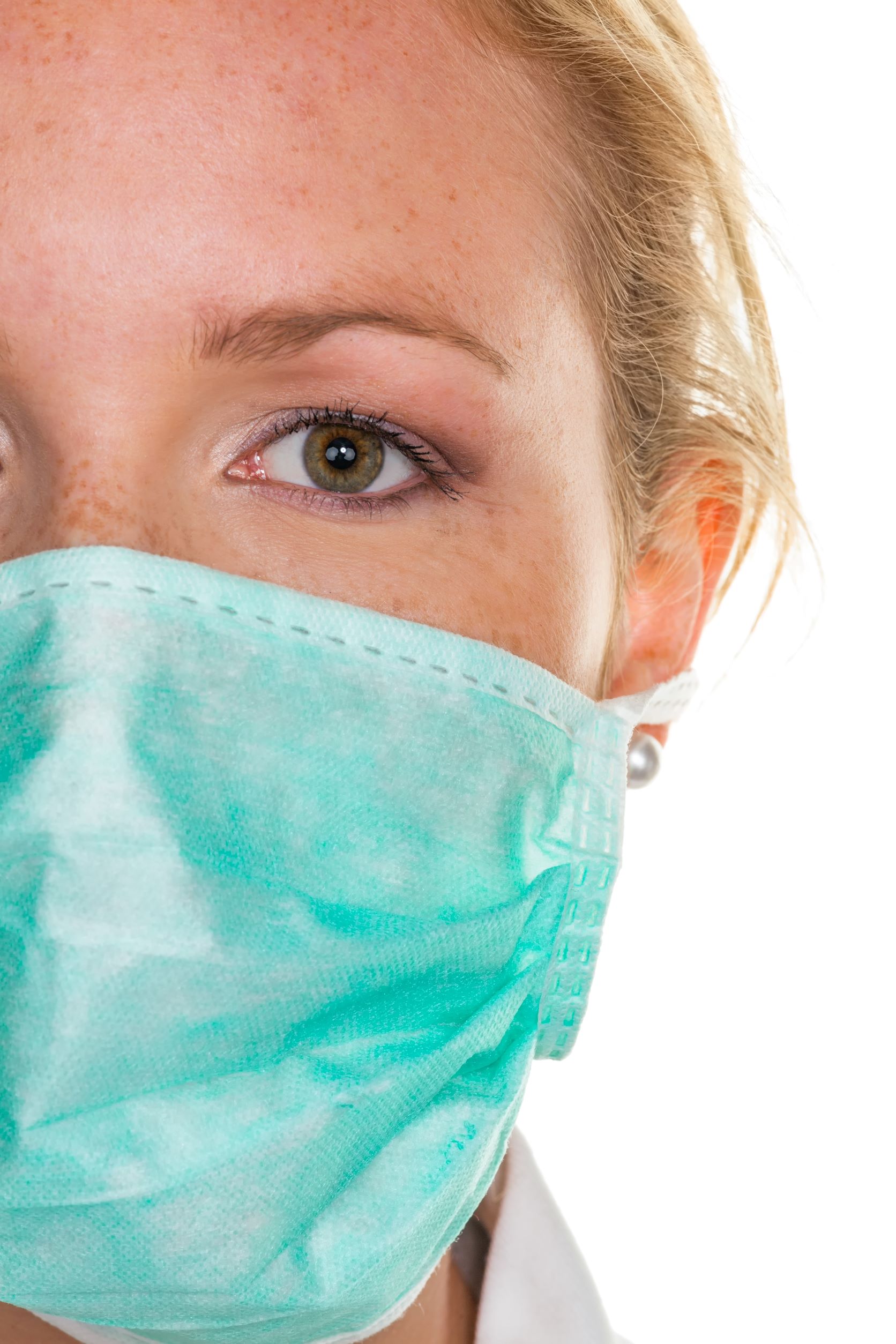
School Nurse Struggle
“We are frequently yelled at. Sworn at. Insulted.”
The daily life of a school nurse during the pandemic.
The requirements for public school nurses have expanded to levels likely no one could have ever imagined due to the pandemic. Contact tracing, quarantines, pool testing, and vaccines have been added to the pre-pandemic duties including medication dispensing, belly aches, playground mishaps and more. What makes matters worse, the nursing shortages, like in other education fields, mean fewer nurses for a much sicker student population.
From September 2021 through the first week of November, the CDC reported 7,428 positive and probable COVID cases in children ages 5-19. Compare that to a similar timeframe last year-and include all of November-and the CDC reported 1,135 cases in that same age group. The 6,000 plus more cases of school-aged children this school year has put a massive strain on the entire public school system, particularly those responsible for taking care of the students and staff in our schools-our school nurses.
I have 20 years of nursing experience -hospital pediatrics; labor and delivery; community health center; camp nursing; and now school nursing. Being a school nurse during COVID is the most difficult out of all the nursing jobs I have ever held.”
– Western Maine School Nurse
The following excerpts are the personal views of several Maine school nurses; Maine Educator has kept their identity private, at each nurse’s request as they all feared speaking out could impact their daily lives.
School Safety Measures and Administration Support are Critical
Our school district in Western Maine has had no evidence of school-based transmission. We do enforce universal masking and assigned seating (when possible). Students are taught to frequently sanitize their hands. Parents are taught to notify the school if their student has COVID-like symptoms so nursing staff can educate them around the protocol for returning to school. We are frequently yelled at, sworn at, insulted, and hung up on by parents and guardians who are just as frustrated about this pandemic as we are. The extra work (mountains of it) and responsibility is nearly impossible to maintain at the current pace. On top of my job as a school nurse in an elementary school, I am the District Nurse Coordinator and for a yearly stipend I help figure out the nursing budget, coordinate team meetings, and act as liaison between our team and the district’s physician consultant. COVID has added so much more to that position.
We are fortunate in our district to have the support of our administration and building administrators. We are fortunate to be paid for our hours worked outside of contracted hours–many school nurses in Maine do the extra work for free. The DOE has provided nurse liaisons to answer questions regarding all things COVID via phone call or email. It is nearly impossible to reach them, and some are covering as many as three counties worth of school districts.
If the mask mandate is done away with, there will be an increase in COVID cases which will create more worry for parents, staff, and students alike. It will also increase the amount of work that school nurses and administrators are required to do whenever a positive case pops up. Often, we have several cases per day, scattered throughout the district, that we hear about. All hands are on deck for these situations, but we cannot abandon our other responsibilities. We are burnt out, mentally exhausted, emotionally drained and constantly worried about our students and staff, not to mention our own families, who miss out on time with us as we contact trace on weekends and in the evenings.
– Western Maine School Nurse
Dealing with Angry Families Who Insult and Threaten
You know who is taking the brunt of parent abuse-school nurses! We are the ones who speak to parents about quarantine their kids, and many are burned out and not happy when that happens! Despite nurses following MDOE and Maine CDC guidelines, parents argue, insult, name call and threaten school nurses every day! Even some teachers are annoyed when we tell them we need seating charts and bus seating charts when they want to attend field trips! Guess what, we’re still in a pandemic! It’s exhausting and we don’t get a break-contact tracing evenings and weekends!
– Southern Maine School Nurse
Nurse Log: Minute by Minute Reality for a Maine School Nurse
Tuesday (Pool Testing)
Arrival at School-9:59 AM
- Check my mailbox-plan to read and file paperwork a bit later this morning.
- Start setting up for pool testing: number the tubes, email lists of students to teachers so they know who to send down when I call their classroom. I test approximately 100 students and staff during the day between the hours of 9:30am and 2pm.
- While I do this, I monitor 2 students with Type 1 Diabetes, neither of whom are independent with their care (between these two wonderful students I make anywhere from 10-20 trips up and down the stairs per day); take phone calls from other district nurses; talk with teachers and my building administrator as they check in with various issues; dispense medication.
- Call parents whose students have been called out ill for the day to discuss protocol
10 AM-2 PM
- I received news that a student has tested positive for COVID-19. The contact tracing process begins as I continue to do pool testing. Teachers are contacted and asked for lists of where the student was and who they were sitting with; bus schedules are received from the Transportation Department; a detailed phone interview is done with parents to determine dates of testing and last date in school for student and any siblings. Principal and district administrator are notified. Other nurses are notified and a spreadsheet for working on contact tracing is created and shared with them. Case is reported via website to the Maine DOE. Close contact calls are made, questions are answered for each parent. I work with the front office staff to coordinate dismissal for close contacts. Their names are entered on the spreadsheet for tracking students who are out of school for something COVID related.
2 PM
- Pool testing is finally done and entered in the lab’s system, boxed up, and given to a courier to be brought to the lab.
- Last few close contact calls are made.
- Emails are sent to teachers whose students will be out of school as they quarantine.
2:30 PM
- I eat lunch, only interrupted twice.
3:00 PM
- Students are dismissed from school. I finish the official DOE Close Contact Template and email it to the appropriate person.
- Check emails one more time and answer urgent ones.
Wednesday
8:40 AM
- Walk in to check my mailbox-1.5-inch-thick pile of COVID results, doctor’s notes to enter into one of the myriad spreadsheets (added to yesterday’s pile because I couldn’t get to it due to pool testing and contact tracing a COVID positive case in our school building). I use these spreadsheets this year to track who is out ill, who may return, who needs to be checked on via phone call, and whose COVID test results are pending.
- Check voicemail and return phone calls.
- Check email and respond to urgent messages.
- Turn on iPods for tracking blood sugars in students with Type 1 Diabetes.
Meeting with Administrator
- Look at my notes from office visits yesterday and try to chart one or two of them before a meeting with a district administrator regarding the new immunization law. During this meeting two students come to see me for various health reasons, and a parent drops off an emergency medication for their student-I have to remind her that I need an order from the child’s PCP in order to administer this medication in school. Back to the meeting with the administrator.
Student Glucose Checks
- Run upstairs to check on a student with T1D whose blood glucose level is too high. Calculate insulin dosage and administer via pump. Notify parents via text message. Thirty minutes later, for the same student, give insulin for a snack time.
- Run downstairs to check on the other T1D and check in with his teacher, who is trained to help manage multiple glucose checks and insulin dosing.
Check Students Showing COVID Symptoms & Address Pool Testing Questions
- Back to my office. See two students for COVID-like symptoms. One is sent home, meaning I have to go over the protocol for returning to school with their parent or guardian. Some get angry, most are very understanding. Today’s parent is the latter.
- Take a phone call from another nurse in the district about some Pool Testing results. Troubleshoot an issue with a nurse from a different school in the district.
- Speak briefly with the building principal about Pool Testing and feedback received from parents about the process.
Address Mental Health Concerns
- Receive medication refill from a parent who is concerned about their child’s mental health. Email to school counselor and school LCSW asking if they can check in with student.
Check-in on Diabetic Student
- Walk upstairs to see the younger student with Type 1 Diabetes–help them count carbohydrates they want to eat at lunch and then calculate insulin. Today, their blood glucose was too low for insulin delivery. Student needed a fast-acting source of glucose, so they had some juice. Notified parent via text message. Continued to monitor the student’s blood sugar and gave insulin via pump on the way out to the student’s recess time. Update parent again via text.
Talk to Maine CDC Investigator
- Return to the health office. Answer phone call from Maine CDC case investigator with questions about a positive COVID case in this school which occurred over a week ago.
More COVID Duties & Questions
- Order masks and gloves from Central Supply for two schools in the district.
- Call from Assistant Principal at high school seeking clarification on policy for when a student should be sent home ill (COVID vs. Non-COVID policies).
Medication, Glucose and Playground Needs
- Dispense medications for a few students (all due at the same time).
- Head down the hall to complete carbohydrate count and insulin calculation for 5th grader who is not able to do that on his own at this time.
- Dispense medication for a student.
- Tend to several students with playground injuries (mostly minor today).
- Check in with a younger student with T1D when they return from recess.
Bathroom and Snack Break
- Use the bathroom for the first time since waking up. Eat a quick snack at my desk–first time having eaten since 7:30 this morning. Despite being on the teacher’s contract, my school nurse colleagues, and I don’t have a regular, 20-minute, student-free lunch. It’s actually quite rare. Neither do we have a prep period every day. There is always someone or something that needs our attention.
Update COVID Spreadsheet
- Update COVID tracking spreadsheet to cross out names of students who are out of quarantine and can return to school and add names of students who were called out with illness who need to test or be seen by their PCP in order to return to school.
Try and Catch Up on Items Not Yet Done
- Email staff regarding flu vaccine opportunities in the community.
- Chart medications that have been given today.
- Reply to emails from staff in my building, as well as staff in other parts of the district.
Final Check on one of the Diabetic Students
- Check on the older student with T1D and calculate carbohydrates and insulin for his snack.
See Students with Non-COVID Complaints
- Chart recess health office visits. See a student about a sore tooth, another who needs a snack, and another who has a belly ache.
Attend COVID Meetings & Check the Pool Results
- Log into Zoom meeting (office hours), held weekly, by the School Nurse Consultant at the Maine DOE. This is where school nurses from around the state receive updates on COVID practices and other policy changes. We can also ask questions and get clarification on issues happening in our schools.
- Attend a meeting to give consultation on COVID safety guidelines for an after-school activities club.
- Check for Pool Testing results (fingers always crossed that they come back negative).
- It’s now 4:45, well past my contracted end time. As I walk out the door, I throw a glance over my shoulder at the now 2-inch pile of paperwork yet to be charted and filed.
-Western Maine School Nurse
“The biggest thing my school needs from the community to keep our school open and safe is to keep children home when they are sick.”
– Mid-Coast School Nurse
What’s Needed to Keep Schools Open
School nurses do not simply put on bandages and give out ice packs as some might think. School nurses wear many hats and are responsible for the health and safety of the entire school community; this includes the students, staff and their families as well. During the ongoing COVID-19 pandemic, school nurses are being pulled in many different directions. One of the biggest struggles for me is I am unable to see my “regular” students. These are the students who come to see me every day, sometimes multiple times, for various needs. Now a significant part of the school nurse’s role is to help students feel listened to, cared for, welcomed and safe. No longer is my primary role attending to a student’s physical needs. Mental health concerns have become much more prevalent in school-aged children.
The biggest thing my school needs from the community to keep our school open and safe is to keep children home when they are sick. As a working parent myself, I do understand the hardship this can be on families. There are many students in my school with chronic health conditions who are not eligible to be vaccinated against COVID-19. As a community, we must work together to keep the students in our school safe and healthy.
– Mid-Coast School Nurse
Increased Duties and Frustrations of the School Nurse
On top of the traditional duties of a school nurse, one Bangor area nurse highlighted what has been added to their plates.
- Contact trace a lot! In the month of September, we had over 380 encounters for contact tracing purposes
- Monitor our students who are and aren’t vaccinated
- Monitor and manage students who are pool testing positives
- Become masters of complex algorithms that change weekly and sometimes daily
- Meticulously go through our students’ school days when there is a positive case and investigate student movements which can take HOURS
- Deal with angry parents who feel we are punishing their families
- Conduct mandated screenings for grades Pre K, K, 1, 3, 5, 7, and 9
- Manage chronic health conditions
- Participate in IEPs and 504s
- Develop individual health plans for students
- Educate staff about the health conditions of students, provide yearly training, and update for any changes in a student’s health condition
- Supporting mental health issues and crisis events
- Notify parents of illness, injury, and vaccine requirements
- Multiple phone calls a day regarding absences, and follow-up for illness and testing
We have multiple phone calls from the CDC asking for the same information sent to the DOE because they do not share info. We are working weekends, holidays, and after hours. We have no lunch breaks. While the administration staff is supportive, we are told that the processes won’t change.
– Bangor Area School Nurse

MEA Support For School Nurses
In various local associations around the state, MEA has been able to negotiate additional benefits for school nurses. In some cases, like in Augusta, nurses received an extra $3,500 for this school year. In other districts, nurses carefully document their hours worked, including weekends and nights and get paid their hourly per diem rate. Some local associations, with the help of MEA, were able to negotiate additional time off—for example, a workshop day or an additional day off before vacation. These days are paid days and nurses do not lose leave time. MEA understands the additional stressors on nurses and MEA UniServ Directors continue to work with local associations to find ways to compensate them for their additional time and effort.

